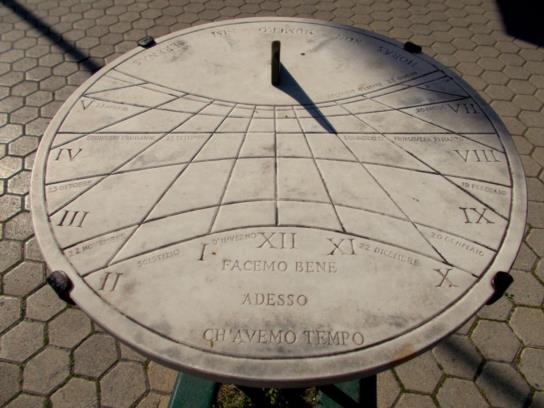
NavList:
A Community Devoted to the Preservation and Practice of Celestial Navigation and Other Methods of Traditional Wayfinding
From: Frank Reed
Date: 2019 Feb 6, 12:08 -0800
Bob, if you're willing to make a rather more intricate baseplate for your sundial, then you don't even need to know time to use it as a compass. Of course it's more work, it's less accurate, and you still need to know the date and also you need to know whether it's a.m. or p.m. (the 'lunch' test, as it is known technically). But it works.
In the example below, the shadow of the gnomon point will track along one of the date curves on any given date. So you set the sundial on a level surface with the gnomon properly inclined for your latitude, and you rotate it until the tip of the shadow falls on the curve for the correct date. It will then be pointing north. It will also be displaying Local Apparent Time. As you rotate the sundial at some moment of time, the shadow of the gnomon point would trace out a circle on the baseplate. That circle intersects one of the hyperbolic curves printed on or cut into the baseplate. When the angle between the circle trace and the hyperbola is relatively high, this technique is relatively accurate. Otherwise, not so much. Clearly you get better results at some hours away from noon (just like a standard sextant time sight). You should not expect better than 5° compass accuracy from this.
Facemo Bene Adesso ch'Avemo Tempo...
Frank Reed







